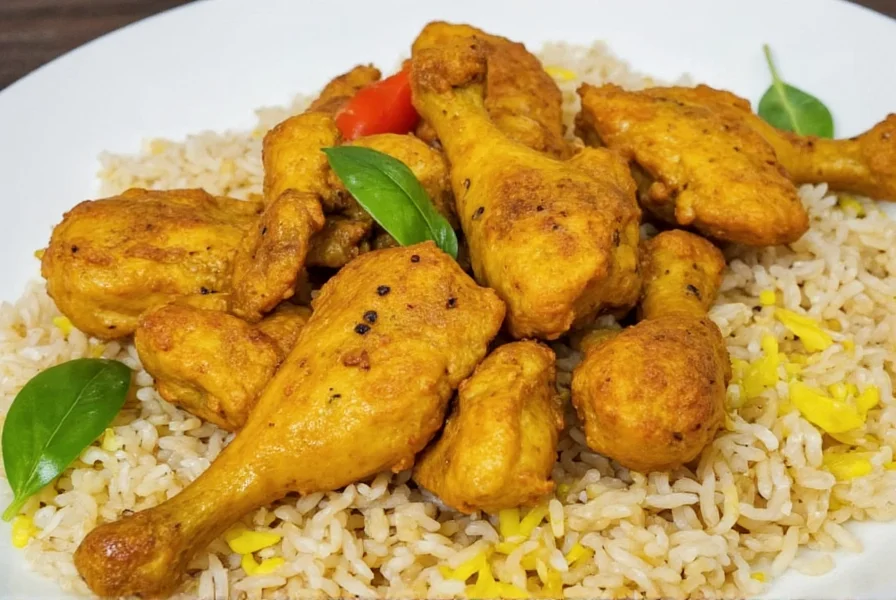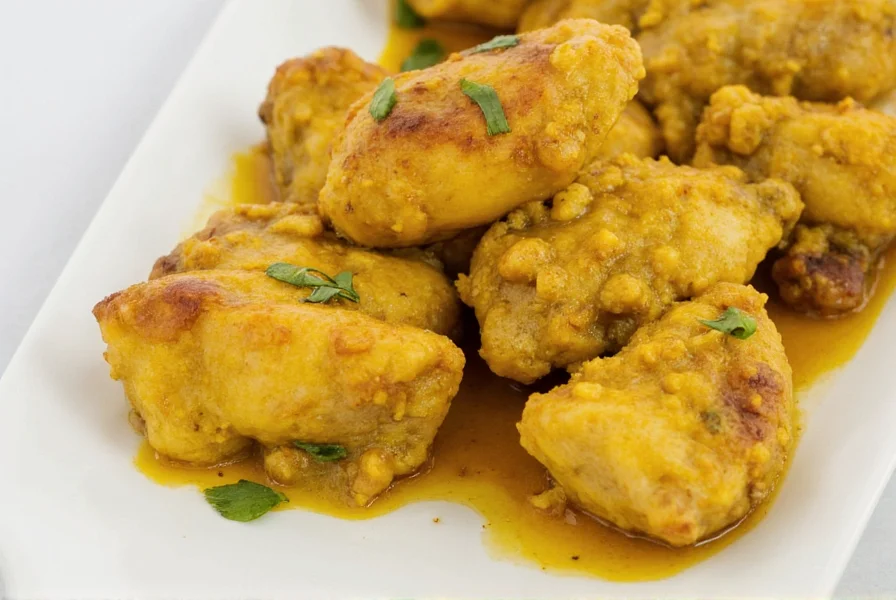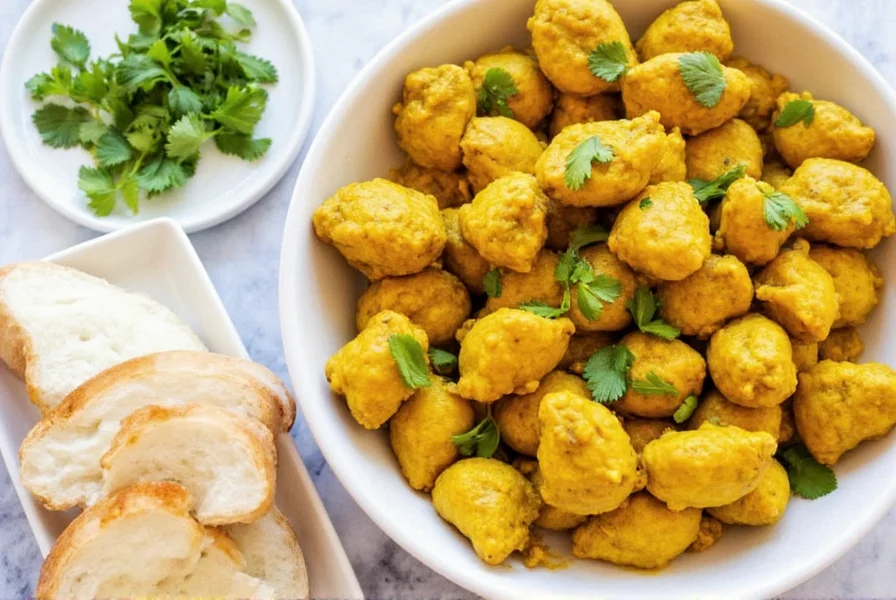Golden-hued turmeric chicken represents one of the most nutritionally intelligent choices for home cooks seeking flavorful yet health-conscious meals. The vibrant yellow spice doesn't just transform chicken's appearance—it fundamentally enhances both nutritional profile and taste complexity when applied correctly. This comprehensive guide reveals precisely how to maximize flavor development while preserving turmeric's valuable curcumin compounds through optimal preparation techniques.
The Science Behind Turmeric's Culinary Magic
Turmeric contains curcumin, a polyphenol with documented anti-inflammatory and antioxidant properties. When combined with black pepper (which contains piperine), curcumin absorption increases by up to 2,000%. This scientific principle transforms simple turmeric chicken from ordinary to extraordinary. The fat content in chicken also aids curcumin absorption, making this pairing nutritionally strategic.

Essential Ingredients for Authentic Flavor
Creating exceptional turmeric chicken requires attention to ingredient quality and proportions. The foundation consists of:
| Ingredient | Function | Recommended Quantity (per lb chicken) |
|---|---|---|
| Fresh turmeric root or powder | Provides color and curcumin | 1 tbsp powder or 2 tbsp grated fresh |
| Black pepper | Enhances curcumin absorption | 1/4 tsp freshly ground |
| Lemon juice or vinegar | Acid component for balance | 1-2 tbsp |
| Garlic and ginger | Aromatic foundation | 2 cloves garlic, 1 tbsp ginger |
Step-by-Step Preparation Method
Follow this professional technique for perfectly cooked turmeric chicken every time:
- Marinate properly: Combine turmeric, black pepper, lemon juice, garlic, ginger, and 1 tbsp oil. Coat chicken thoroughly and refrigerate for 30-120 minutes (not longer, as acid can toughen meat).
- Dry the surface: Pat chicken dry before cooking—moisture prevents proper browning.
- Optimal cooking temperature: Heat oil in skillet to 375°F (190°C) before adding chicken.
- Cooking time: Sear 5-7 minutes per side for boneless pieces, 20-25 minutes for bone-in, until internal temperature reaches 165°F (74°C).
- Rest before serving: Allow chicken to rest 5 minutes for juicier results.
Avoiding Common Turmeric Chicken Mistakes
Even experienced cooks make these critical errors when preparing turmeric chicken:
- Over-marinating: Acidic components in marinades can make chicken mushy when left too long
- Insufficient fat: Curcumin is fat-soluble—always include healthy oil in marinade
- High heat burning: Turmeric burns easily at high temperatures, creating bitter compounds
- Skipping resting time: Cutting too soon releases precious juices
Global Variations Worth Trying
Cultures worldwide have perfected their own turmeric chicken interpretations:
- Indonesian Ayam Kunyit: Uses fresh turmeric root with lemongrass and kaffir lime leaves
- Caribbean Curry Chicken: Combines turmeric with allspice and Scotch bonnet peppers
- Middle Eastern Turmeric Chicken: Features sumac and pomegranate molasses for tangy complexity
- Thai Turmeric Chicken: Incorporates coconut milk for creamy texture and sweetness
Serving Suggestions for Maximum Enjoyment
Pair your turmeric chicken with complementary sides that enhance both flavor and nutritional value:
- Cauliflower rice (absorbs flavors while keeping meal low-carb)
- Steamed broccoli with lemon zest (provides vitamin C to boost curcumin absorption)
- Quinoa salad with fresh herbs (adds protein and fiber)
- Mango-avocado salsa (creates sweet-creamy contrast to savory chicken)
Storage and Reheating Best Practices
Proper storage maintains both safety and quality:
- Refrigerate within 2 hours of cooking in airtight container
- Consume within 3-4 days for optimal flavor and texture
- Reheat gently in skillet with splash of water or broth (microwaving dries out chicken)
- Freeze for up to 3 months in portion-sized containers

Frequently Asked Questions
Does cooking turmeric reduce its health benefits?
Cooking turmeric with black pepper and healthy fats actually enhances curcumin absorption. While some heat-sensitive compounds degrade, the overall bioavailability increases when prepared properly with complementary ingredients.
Why does my turmeric chicken turn out dry?
Dry turmeric chicken typically results from overcooking, insufficient marinating time, or skipping the resting period. Bone-in pieces retain moisture better, and using a meat thermometer ensures perfect doneness without overcooking.
Can I use turmeric powder instead of fresh turmeric root?
Yes, turmeric powder works well and offers more consistent curcumin levels. Use 1 tablespoon powder for every 2 tablespoons of fresh grated turmeric. Powder dissolves more readily in marinades, creating more uniform color and flavor distribution.
How can I prevent turmeric from staining my cutting board and hands?
Wear food-safe gloves when handling fresh turmeric. For cutting boards, immediately wash with soapy water after use, then rub with lemon juice or baking soda paste to remove stains. Stainless steel or glass surfaces resist staining better than wood.











 浙公网安备
33010002000092号
浙公网安备
33010002000092号 浙B2-20120091-4
浙B2-20120091-4